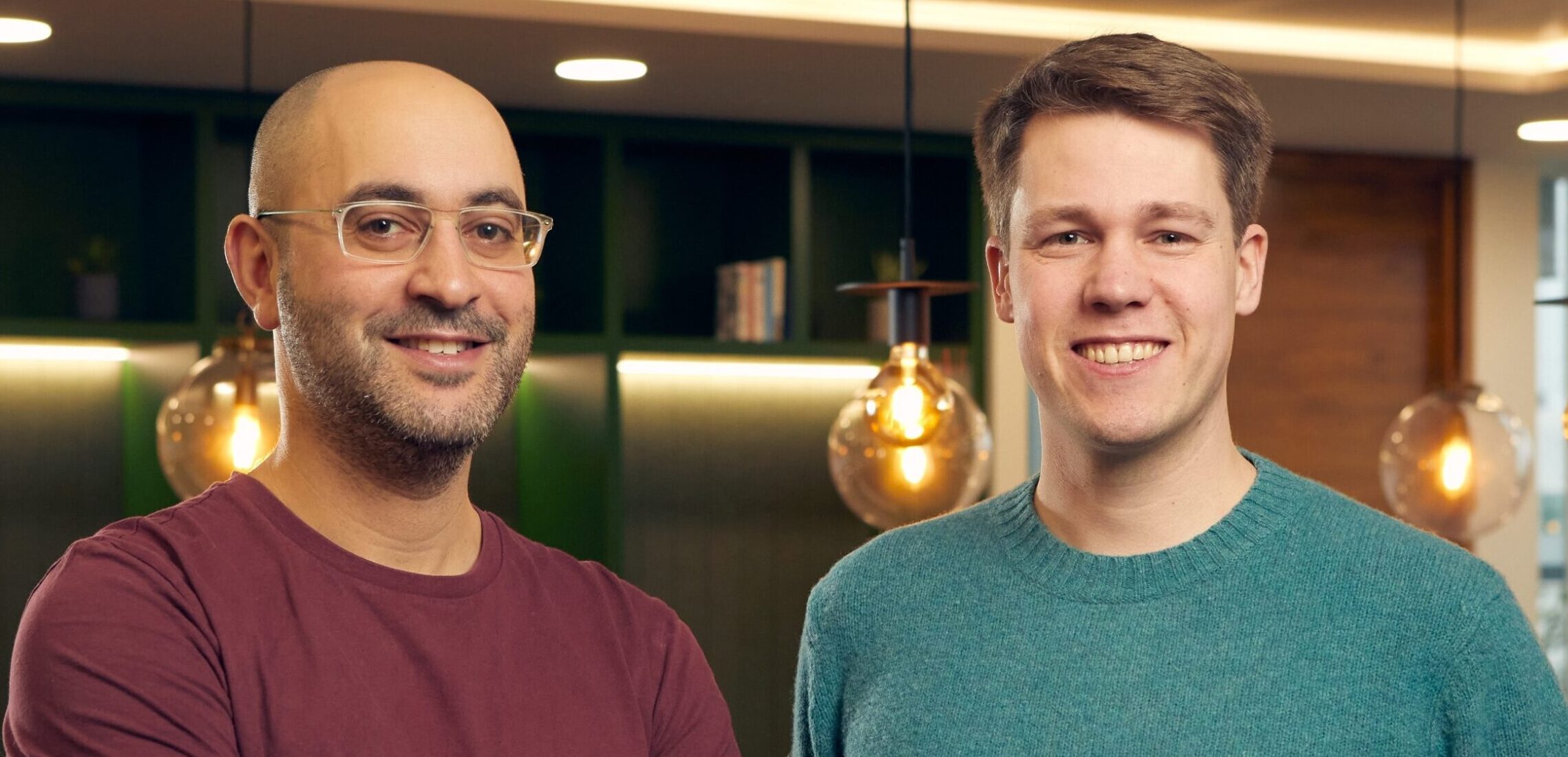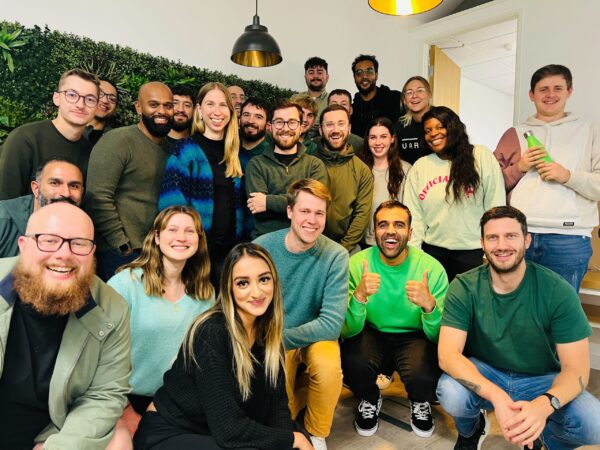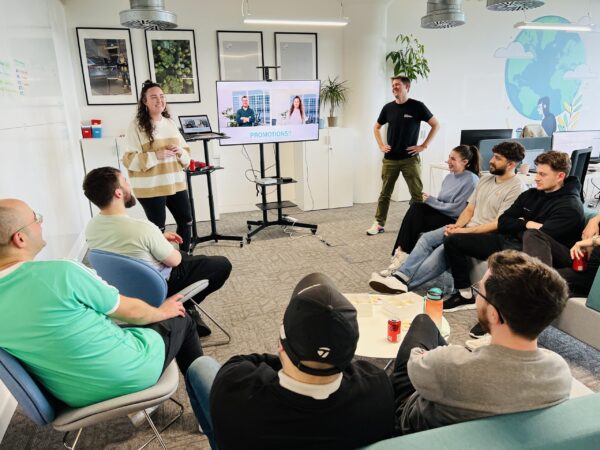Meet Thom Groot from The Electric Car Scheme
Q: Can you provide some background about yourself and The Electric Car Scheme?
A: I’m Thom Groot, a co-founder of The Electric Car Scheme. Our mission is to facilitate the transition to net zero, starting with the automotive sector. Transport is a major contributor to carbon emissions, and we’re here to make the switch to zero-emission vehicles not just easier but also more affordable. We believe that affordability and ease are the main hurdles in adopting net zero practices.
To tackle this, we’ve introduced an electric car salary sacrifice scheme that allows individuals to pay for their electric car out of their pre-tax salary, which can lead to savings of 30 to 60% on the cost of the car. We understand that simplifying the process plays a critical role in decision-making. Therefore, we also provide additional services like charging equipment and insurance. By making electric cars more accessible and cost-effective, we’re helping people choose a sustainable future. That encapsulates our company ethos and the journey we’re embarked on.
Q: What inspired the creation of The Electric Car Scheme?
A: The concept was born out of my co-founder’s personal challenges. After returning to the UK from Canada, where he worked with Funding Circle, he wanted an electric car for his family but was taken aback by the high costs. However, he discovered government tax incentives meant to encourage the shift to electric vehicles, which were unfortunately complex and largely inaccessible to the majority, especially those in startups or small businesses. The incentives were really only viable for employees of large corporations, and even then, the market offerings were overpriced. This essentially diluted the benefit of the tax savings. He recognized the need for a fairer, more inclusive solution that catered to all businesses, regardless of size. This realization sparked the creation of The Electric Car Scheme. We started by conducting research and onboarding our first customers, and now we’re rapidly growing within the UK. Our vision doesn’t stop here; we’re also planning to expand internationally.
Getting Ready for the Pre-seed Round
Q: What milestones did you reach during your pre-seed fundraising that made your company attractive to venture capitalists?
A: In the early stages, even before we committed to working on The Electric Car Scheme full-time, we were devoted to establishing our product, often working evenings and weekends. By the time we began our pre-seed fundraising, we had been at it for about a year. Although we were still in the development phase, we managed to onboard around 15 customers, constructed a basic website, and laid down our initial marketing strategies. We were in the process of expanding our team and making our first hires to bolster our sales and marketing efforts and accelerate our growth. We had a functional prototype of our product in place and a clear vision of what we wanted to build. Additionally, our early financial projections—like potential revenue per car and marketing costs—were quite promising and painted a positive picture for our investors. Back then, it was just the two of us managing full-time responsibilities, and we had identified who our next team members would be. Sharing these developments and our trajectory with potential investors was a pivotal part of our journey. Since those early days, the company, our team, and our product have all evolved significantly. But yes, those were the days when we were deeply involved in every aspect of the company and moving at a very fast pace to grow our presence.
Why Seedcamp?
Q: How did you discover Seedcamp, and what drew you to them?
A: Seedcamp came onto our radar during our pre-seed fundraising round. Initially, we started with a friends and family round just to get off the ground quickly, but as the viability of our business became apparent, we knew we needed to secure a more substantial investment. So, we tapped into our networks to identify key players in the pre-seed investment arena, which include both angel investors and early-stage venture capital funds. Seedcamp’s reputation was strong among our contacts; they’re known as one of the top pre-seed venture capital funds. Their prominence in the industry made them a compelling choice for us. As a result, they were high on our list of potential investors to approach. We were keen to explore if they would be the right fit for our vision and growth trajectory.
Seedcamp’s Funding Procedure
Q: How did you first get in touch with Seedcamp and begin conversations with them?
A: Our introduction to Seedcamp was through a network of angel investors. During our pre-seed outreach, we initially connected with contacts who were either seasoned angel investors or those who had successfully raised funds in the past. We approached them with our pitch, inquiring not only about their interest but also if they could facilitate introductions to potential investors, including those at Seedcamp. One of these angels, who had previously invested through Seedcamp or had a connection with Seedcamp’s investments, believed in our potential and shared our pitch deck with the Seedcamp team. This investor’s relationship with Seedcamp and particularly, I believe, with Reshma from Seedcamp, provided us with a warm introduction.
Following that, the Seedcamp team reached out to us, which led to an initial conversation. This conversation was the starting point for the due diligence and the typical investment process that followed. It was this connection that opened the door for us to engage with Seedcamp, marking the beginning of a significant partnership in our journey.
Q: Are you able to share the investment amount received from Seedcamp and the ticket size?
A: Yes, I can share some details about our pre-seed funding round. Our initial round amounted to a million pounds, with Seedcamp coming in as the lead venture capital investor. Typically, Seedcamp would invest 200,000 to 700,000 pounds when they lead a round, and our case fell within this standard bracket. From what I recall, the terms and the ticket size of our funding were quite standard for a pre-seed venture capital investment at that time. It was aligned with what Seedcamp would typically provide to other companies they were investing in during that phase.
Q: Could you describe the timeline and level of effort involved in closing the funding round with Seedcamp?
A: The process from start to finish with Seedcamp was quite efficient and required relatively less effort than what we experienced in the seed round and subsequent investment rounds. Since it was an early-stage investment, there was a mutual understanding that our time should be focused more on building the business rather than solely on fundraising. Seedcamp was particularly considerate of this. From my recollection, the entire procedure took about six to eight weeks. Seedcamp made it clear quite early on whether they were interested in investing, which expedited the process. Had they decided against investing, I believe they would have communicated this promptly as well, as they are known for being quick decision-makers.
The process did not feel overly lengthy, partly because we were concurrently in discussions with other investors and angels, which generated enough interest to close the round within our desired timeframe. Seedcamp showed a great deal of flexibility to accommodate our schedule and business needs while also fulfilling their internal investment process requirements.
Seedcamp’s Support Beyond Funding
Q: What additional support, aside from financing, did Seedcamp offer to your startup?
A: Seedcamp provided a robust support system beyond just financial investment. Whenever we had queries or sought advice, we could readily approach them. They have an extensive network, so if we need expertise in a specific area, like marketing, sales, or operations, they could connect us to the right people. They have fostered communities within their network, which includes groups on platforms like WhatsApp and Telegram, where we could pose challenges and receive input from peers and experts. Moreover, they organize dedicated sessions to tackle such issues.
Additionally, like many venture capitalists, Seedcamp offers access to discounts from various tech providers. In my experience, Seedcamp had a range of such benefits, perhaps even more extensive than some other early-stage VCs we’ve encountered. Seedcamp also played a strategic role in our growth. They provided valuable insights and connections for our subsequent funding rounds and guided us through the process. Overall, they were incredibly supportive and always available when needed, while also being mindful of not overstepping or inundating us with queries at inopportune times. They truly respect their portfolio companies and their needs.
Q: Can you share an example of how Seedcamp’s insights or involvement influenced your approach to scaling and expanding your business?
A: Certainly, one instance that stands out is our focus on brand development. Seedcamp has specialists within their team who are adept at marketing strategies. I recall working with Natasha from Seedcamp who conducted a very enlightening session with us about our brand identity.
She assisted us in deeper contemplation about what our brand should embody, beyond the superficial aspects like logos or design. Natasha’s approach was particularly valuable because she didn’t dictate what our brand should be; instead, she guided us to arrive at our own conclusions about our brand’s essence and what we stood for. This input came at a critical time when we recognized the need for expertise in this area, and her assistance was instrumental in refining our branding strategy.
Electric Car Scheme’s Current Status
Q: Could you provide an update on your company’s progress and achievements?
A: We’ve come a long way since the initial stages and the invaluable seed investment from Seedcamp. Our team has expanded significantly, and we now have nearly 50 dedicated members. Following our pre-seed endeavors, we’ve successfully closed a seed funding round of two and a half million pounds, which has been a substantial milestone for us.
In terms of customer base, we’ve experienced considerable growth, with around 1500 clients on board and witnessing a consistent increase every quarter. Product development has been another area of significant progress. We’ve made comprehensive strides in improving our offerings, especially concerning the car supply chain. Our packages now include not only the vehicles but also electric car chargers, insurance, and maintenance services. Soon, we’re looking to integrate public charging into our bundle of services. When it comes to brand presence, we’ve established ourselves as one of the leading electric car salary sacrifice providers in the UK’s burgeoning market. We take pride in this, considering how competitive and dynamic the sector is. Reflecting on the last eighteen months or so, it’s been a period of robust growth and development for us, and we’re quite optimistic about the trajectory we’re on.
Q: What’s been your experience with different go-to-market channels?
A: We’ve really thrown the net wide when it comes to our marketing channels, taking a crack at just about everything we could brainstorm. The key for us is in the testing – we’re big on A-B testing new ideas to see if they improve our results or not. Currently, we’re juggling around 10 to 12 different types of marketing activities. We think this assortment is effective for now, but we don’t just set it and forget it. Our approach is dynamic, and we routinely reassess and change our strategies every few months to keep things fresh and effective.
Q: Can you share the long-term vision and goals of your company?
A: At the heart of our company is the mission to propel as many people as possible towards making choices that align with reaching net zero swiftly. We’re tackling this ambition from three angles. Firstly, we’ve developed a product for the UK car market aimed at involving a large number of people because the more people we engage, the greater the impact and the faster we’ll progress towards net zero for cars in the UK. Looking ahead, we’re not limiting our scope to just the UK; we see a significant opportunity for international expansion to amplify our impact. The secondary phase of growth revolves around this global outreach.
Additionally, we’re not stopping at cars. Achieving net zero means transforming not only transportation but also how we manage and heat our homes and utilize energy. This encompasses developments in energy storage and grid balancing, among others. We’re actively working on product innovations in these sectors. In essence, our long-term vision is to extend beyond cars and the UK, making it easy and affordable for everyone to contribute to a net zero future. There’s a lot to be done, and we believe we have a significant role to play in this crucial global shift.
Q: What are your plans for expanding beyond the UK, particularly into Europe?
A: The UK market remains our primary focus, where there’s still considerable potential for growth. We’re expanding rapidly here and it’s critical for us to maintain that momentum. However, beyond the UK, we are certainly setting our sights on international expansion, with Europe being our next frontier. Different European countries present varying levels of interest for us, largely depending on their general attitude towards net zero and their support for the transition to more sustainable practices. Europe offers a fertile ground for our initial steps in international growth, owing to its positive stance on net zero initiatives. After establishing a presence in select European countries, we’ll look to venture into other significant markets, like the United States, and eventually, emerging markets across Asia and Africa. These steps are taken with careful consideration of each market’s readiness to embrace the transition we’re advocating for.
Final Advice
Q: What tips can you offer to founders looking to approach Seedcamp or navigate the fundraising process?
A: For founders who are gearing up to approach Seedcamp or any investors, clarity is key. Be crystal clear about your company’s mission, the strengths of your team, the problem you’re addressing, and why it matters. Articulate your business’s purpose and goals with conviction.
When it comes to fundraising, don’t hesitate to ask for help. Start with your network, reach out to those you trust, and don’t be shy about requesting introductions. Every time you meet with potential investors, ask if they can connect you with three other people who might be interested or could offer assistance. Facilitate these connections by preparing the introduction emails yourself, which makes it incredibly easy for your contacts to forward your message. This approach not only shows respect for their time but also increases the likelihood they’ll assist you. The key is to be proactive and make it as simple as possible for others to lend you a hand. This has been one of our most effective strategies and a lesson that has served us exceptionally well throughout our journey.



